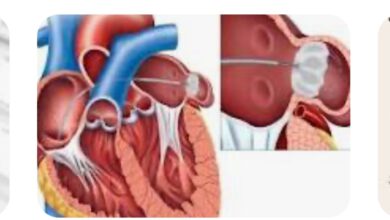MEDICAL NEWS BRIEFS #23

Carpal Tunnel Syndrome: To operate or not to operate? That’s the question: Carpal tunnel syndrome is compression of the median nerve at the wrist that causes numbness, tingling, pain, weakness, and muscle atrophy in the hand. It is treated by splinting, corticosteroid injection, platelet-rich plasma injection, physical therapy, and combinations thereof, or by surgical release of the compressed nerve. The trend today is toward non-surgical treatment because surgery “results in some clinical improvement….but it does not appear to lead to clinically significant improvement in symptoms or hand function.” So a review of 14 trials involving 1231 participants (1293 wrists) was done. Surgery was compared to splinting, corticosteroid injection, a combination of both, plus other less-frequently-done treatments. They came to 3 conclusions: one, there was no “clinically meaningful differences” between splinting and surgery, two, there was “no significant difference in health-related quality of life or pain,” and three, “similar conclusions were drawn regarding the comparison between surgery and corticosteroid injection.” Current clinical guidelines recommend the following:
- Patients with severe symptoms or significant findings of muscle atrophy or a positive diagnostic nerve test should be referred for surgery.
- Surgery has greater benefit at 6 and 12 months after onset of symptoms compared to
Splinting, NSAID drugs, PT/OT, or a single corticosteroid injection.
That seems contradictory, but the studies reporting negative results were in patients who had carpal tunnel syndrome longer term (longer than 12 months).
Reference: Jung B, Leggit J. Surgical vs. Nonsurgical Treatment for Carpal Tunnel Syndrome. Am Fam Phys 2024 September;110(3):235-236.
What’s the best treatment for Morton’s Neuroma? Injection vs. surgery: Moron’s Neuroma is a “benign enlargement of the common plantar digital nerve (nerve to the toe)….in the 2nd or 3rd web space of the foot”…that causes “pain between the metatarsal heads” (between the toes). The pain is burning, stabbing, or tingling or the patient feels like he’s walking on a pebble. It is treated by changing shoes, padding, radiofrequency ablation, cortisone injection, or surgery. Six trials with 373 patients concluded the following: 1. A local anesthetic injection alone did not improve pain or function at 3 and 6 months compared to an injection of cortisone plus a local. 2. Cortisone plus local anesthetic did not improve quality of life or patient satisfaction. 3. At 34 months, the surgical approach (top of foot incision vs. bottom of foot incision) made no difference in patient satisfaction. The American College of Foot and Ankle Surgeons recommends conservative, non-surgical treatments be tried first before surgery or nerve-ablating procedures are considered.
Reference: Jiang D, Qui J. Treatment Options for Morton Neuroma. Am Fam Phys 2024 September;110(3):236-237.
Deliver bad news in person or over the phone? Does it make a difference? Analysis of 11 controlled trials showed “delivering bad news by telephone does not affect levels of anxiety, depression, or satisfaction with care [compared to] delivering the news in person.” My feeling was it was best, and certainly more personal and compassionate, when delivered in person. You can tell someone his cholesterol by phone, but telling him he has cancer is far better done face-to-face.
Reference: AFP Clinical Answers 2024 September;110(3):294.
Topical treatment for Rosacea? What’s best? First line topical for Rosacea, an adult, acne-like skin disorder affecting the face, chest, nose, and scalp is recommended. For pimples and pustules, topical Ivermectin 1% cream (Soolantra), metronidazole 0.5% gel (Metrogel), azelic acid 15% gel (Azelex) are recommended. Ask your doctor about these, but remember oral doxycycline and/or isotretinoin (formerly Accutane) are recommended as well.
Reference: AFP Clinical Answers Am Am Phys 2024 September;110(3):294.
Does mammography “overdiagnose” breast cancer? Does mammography miss breast cancers? The answer to both questions is “YES.” Mammograms, and the doctors who interpret them, miss finding a cancer 12% of the time. That’s a small, but still significant, number when it is you whose breast cancer was allowed to go months or years undetected and allowed to grow and metastasize. Underdiagnosis is portrayed as a far more serious result than is “over diagnosis,” and it gets all the attention. Attention because women are inclined to be anxious, depressed, or frankly petrified when they are told their mammogram shows something suspicious. They are subjected to repeat mammograms, ultrasounds, MRI’s, needle biopsies, or even open biopsies which are not necessary. A study of 54,635 women found the rate of overdiagnosis increases with age. Age 70-74, 31% of women were overdiagnosed, age 75-84 47% were overdiagnosed, and women 85 and older were screened and found to be positive 51% of the time. My thought is I would prefer to be in the overdiagnosed and over-evaluated group that live than in the 12% who were missed and died.
Reference: AFP Clinical Answers Am Fam Phys 2024 September;110(3):294.
Is it my gallbladder? How do I know if I have gallstones? The diagnostic test of choice for determining if a patient has symptomatic gallstones and gall bladder disease is abdominal ultrasonography (or gallbladder ultrasound). It can detect gallstones, thickening of the GB wall, and infection of the GB (cholecystitis).
Reference: AFP Clinical Answers Am Fam Phys 2024 September;110(3):294.
Stable angina. What needs to be done? Stable angina is chest pain, nausea, or shortness of breath (or all of the above) that is reproducible with the same amount of exertion, yet not increasing in frequency or severity. When the same symptoms become worse, occur more frequently, or occur with less provocation it is called unstable angina. Both would concern me. To have any angina, stable or unstable, means you have a critically blocked coronary artery that needs to be addressed. A controlled trial, however, showed angioplasty and stent placement improved stable angina in patients not taking antianginal meds, but the risks of the procedure exceeded the benefit for patients who were benefitted by antianginal drug treatment. My opinion is give me the stent and eliminate any concern I have about my angina becoming unstable.
Reference: AFP Clinical Answers Am Fam Phys 2024 September;110(3):294.




